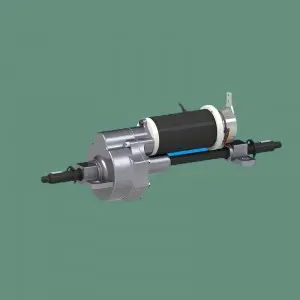The transaxle is a critical component in a vehicle’s drivetrain, responsible for transmitting power from the engine to the wheels. It combines the functions of a transmission and an axle, hence the name “transaxle.” This integrated unit is commonly found in front-wheel drive and some rear-wheel drive vehicles, and it plays a vital role in the vehicle’s overall performance and functionality.
Now, let’s delve deeper into the concept of “verbal consent to the transaxle.” The term can be a combination of “agree” and “verbal”, which may mean a verbal agreement or understanding related to the transaxle. However, it is worth noting that in the automotive engineering and mechanical fields, the term “agreed verbal transaxle” has no accepted or standard meaning. This combination of words can be used incorrectly or as a misunderstanding of technical terms.
To better understand the transaxle and its importance in a vehicle, let’s explore its functions, components, and importance in the automotive industry.
Transaxle functions:
The transaxle performs several important functions in a vehicle’s driveline. These include:
Power transmission: The main function of the transaxle is to transmit power from the engine to the wheels. It does this by using a series of gears and shafts to transfer the rotational energy generated by the engine to the drive wheels.
Shifting: The transaxle contains a gearbox that allows the driver to shift between different gears, thereby controlling the speed and torque delivered to the wheels. This is critical to optimizing performance and fuel efficiency in a variety of driving conditions.
Differential operation: The transaxle is equipped with a differential mechanism, which allows the drive wheels to rotate at different speeds when turning. This differential effect is critical to maintaining stability and traction during vehicle maneuvers.
Transaxle components:
A typical transaxle consists of several key components, each of which plays a specific role in the transmission of power and torque. These components include:
Transmission: The transmission within the transaxle contains a set of gears that can be engaged or disengaged to vary the engine’s speed and torque output. This allows the vehicle to operate efficiently at a variety of speeds and driving conditions.
Axles: The transaxle contains the axles that transfer power from the transmission to the drive wheels. These shafts are responsible for transmitting the rotational force generated by the engine to propel the vehicle forward.
Differential: The differential mechanism within the transaxle allows the drive wheels to rotate at different speeds, especially when the vehicle is turning. This component is essential for maintaining stability and preventing the wheels from spinning when cornering.
Importance of transaxle:
The transaxle is a critical component in modern vehicle design, especially in front-wheel drive configurations. Its importance stems from several factors, including:
Space efficiency: By combining the functions of the transmission and axle into a single unit, the transaxle helps optimize space within the vehicle’s driveline. This is especially beneficial for front-wheel drive vehicles, where space is limited due to the engine and front suspension layout.
Weight distribution: The transmission and axle components are integrated into the transaxle, helping to provide a more balanced weight distribution within the vehicle. This enhances handling and stability, especially in front-wheel drive applications.
Simplified assembly: The use of a transaxle simplifies the assembly process during vehicle manufacturing as it integrates multiple drivetrain components into a single unit. This can save automakers money and increase production efficiency.
In summary, the transaxle is an essential component of a vehicle’s drivetrain, performing basic functions related to power transmission, gear shifting, and differential operation. While the term “agreed verbal transaxle” has no accepted technical meaning in the automotive world, understanding the role and significance of a transaxle is crucial for anyone interested in automotive engineering and mechanics. By mastering the function, components, and importance of a transaxle, one can gain a deeper understanding of the complex system that powers modern vehicles.
Post time: Jul-24-2024


